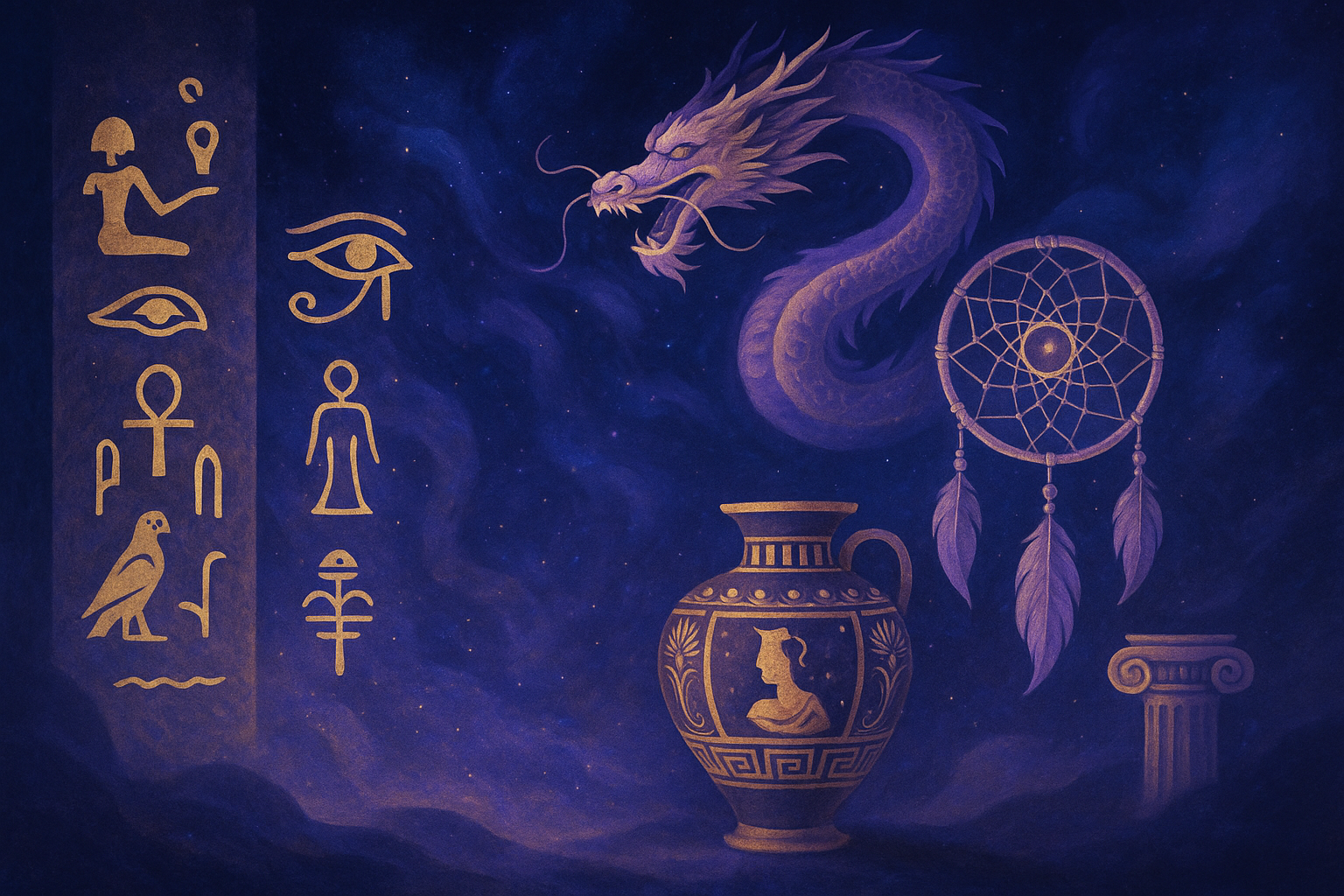Dream Symbols Across Different Cultures

Universal Symbols, Diverse Meanings
Dreams often speak in the language of symbols, but that language isn't always universal. The meaning attributed to a specific dream image – a snake, a house, a body of water – can vary dramatically depending on the dreamer's cultural background, religious beliefs, and societal norms. Exploring these differences highlights the profound way our waking life experiences shape our subconscious landscapes.
The Influence of Culture on Dream Interpretation
Culture provides a framework of shared myths, stories, values, and experiences that inevitably color how we perceive and interpret symbols, both awake and asleep. What might be a terrifying image in one culture could be a sacred or healing symbol in another.
Cross-Cultural Symbol Examples:
Let's look at how some common dream symbols might be viewed differently:
- Snakes:
- Western/Judeo-Christian Influence: Often associated with temptation (Garden of Eden), deceit, danger, hidden threats, or sometimes repressed sexuality (Freudian interpretation).
- Eastern (Hinduism, Buddhism) / Indigenous Traditions: Frequently represent life force (kundalini), transformation, rebirth (shedding skin), healing (Rod of Asclepius), wisdom, and connection to the earth or divine feminine energy.
- Water:
- Common Association: Often linked to emotions, the subconscious, purification, and flow.
- Cultural Nuances: A vast, turbulent ocean might signify overwhelming emotion or chaos, but in island cultures, it could represent sustenance, connection, or the realm of powerful deities. A calm river might symbolize life's journey or boundaries. A well could represent hidden knowledge or community resources.
- Teeth Falling Out:
- Widespread Interpretation: Commonly linked to anxiety, stress, feelings of powerlessness, loss of control, communication difficulties, or concerns about appearance.
- Specific Beliefs: In some folk traditions, it might be interpreted more literally as a premonition of loss or illness concerning oneself or a family member.
- Houses:
- Common Association: Often represent the self, the psyche, or different aspects of one's life. Rooms can symbolize different facets of the personality or memories.
- Cultural Context: The type of house (a familiar childhood home, a grand mansion, a simple hut) and its condition (pristine, dilapidated, under construction) are heavily influenced by personal experience and cultural values related to home, security, and status.
Finding Personal Meaning
While understanding cultural archetypes provides valuable context, the most potent meaning often lies at the intersection of cultural influence and personal experience. When interpreting a dream symbol, consider:
- Cultural Background: What are the common meanings of this symbol in your culture or community?
- Personal Associations: What does this symbol mean to you based on your own life experiences, memories, and feelings?
- Dream Context: How did the symbol appear in the dream? What were the surrounding events and emotions?
By exploring these layers, we move beyond generic interpretations to uncover the rich, personalized messages our dreams may hold. Dreamist aims to facilitate this exploration by acknowledging the diverse tapestry of human belief and experience.
